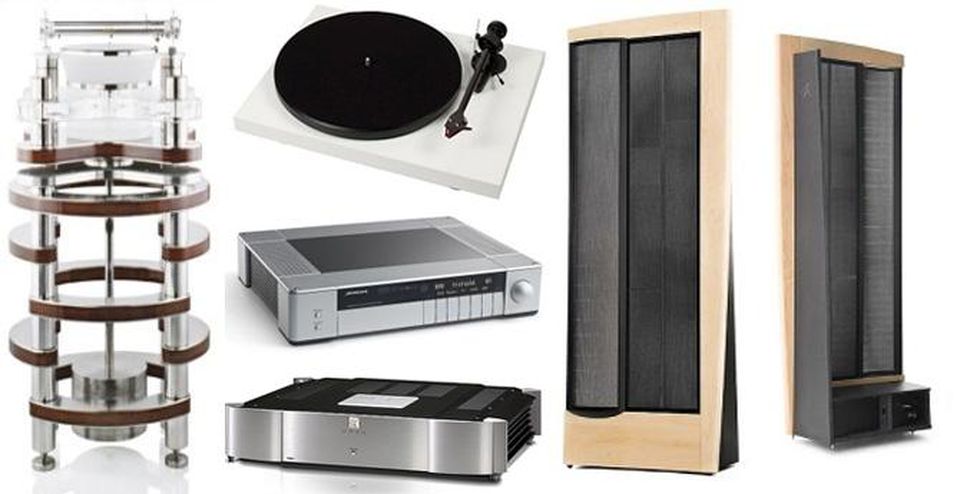Position:Home » Technical Articles
High-End Audio Equipment Resistance Selection Needs to Take into Account Noise
Writer:Microhm Page View:Date:2019-10-23
Noise is an unwanted wide spectrum signal that may be superimposed on any useful signal, including DC. Resistors, like other passive components, are noise sources to various degrees, depending upon resistance value, temperature, applied voltage, and resistor type. In high-end audio equipment, careful selection of resistors is one of the best ways to avoid or minimize noise and distortion in the signal path.
Many experiments have been done to show why some resistors are "noisier" than others. But the only test that audio experts and audiophiles have agreed on is comparing the level of fidelity that results when different resistor technologies are used in actual audio systems. Overall resistor noise has several components. The most relevant for audio applications are thermal noise and current noise. Thermal noise is notable for being independent of the resistive material. In fact, the thermal noise level is the same for any type of resistor provided the resistances and temperatures are the same.

Current noise, on the other hand, has a direct relationship to the type of resistive material.
Resistors based on composition resistive materials such as carbon and thick film have the highest level of current noise. Thin-film resistors have a considerably more homogeneous structure and consequently are less noisy. Microhm Electronics' NAP series is a typical thin film resistor.
The lowest noise level is observed in resistors with bulk metal resistive elements: foil and wirewound. Wire is made of metal alloys similar to foil material, but additional noise may come from the junction of the fine wire of the resistive element and the comparatively coarse resistor terminals. In foil resistors, the terminals and the resistive element are parts of the same piece of the foil, so this problem is avoided.

But the major objection to wirewound resistors is their inductance, which results in chopping the signal peaks, and the significant dependence of resistor impedance on signal frequency. In addition, special attention must be paid to the following effects associated with reactance of wirewound resistors: The audio amplifier may oscillate spontaneously at 5 MHz to over 50 MHz affecting audio quality. Equivalent series inductance (ESL) can cause large phase shifts affecting audio tone. The wire coil may act as a pick-up of EMI that may surpass the level of usual current noise.
Foil resistors, such as MPR series, NMS4527, NMS2818, avoid these problems because they are structured using chemical etching of a flat bulk metal foil so that the current in adjacent current carrying paths runs in opposing directions, cancelling parasitic inductance of these paths. Also, path-to-path capacitances are connected in series, which has the effect of minimizing the parasitic capacitance of the resistor. These low-inductance/capacitance resistors are characterized by nonmeasurable peak-to-peak signal distortions.
Many experiments have been done to show why some resistors are "noisier" than others. But the only test that audio experts and audiophiles have agreed on is comparing the level of fidelity that results when different resistor technologies are used in actual audio systems. Overall resistor noise has several components. The most relevant for audio applications are thermal noise and current noise. Thermal noise is notable for being independent of the resistive material. In fact, the thermal noise level is the same for any type of resistor provided the resistances and temperatures are the same.

Current noise, on the other hand, has a direct relationship to the type of resistive material.
Resistors based on composition resistive materials such as carbon and thick film have the highest level of current noise. Thin-film resistors have a considerably more homogeneous structure and consequently are less noisy. Microhm Electronics' NAP series is a typical thin film resistor.
The lowest noise level is observed in resistors with bulk metal resistive elements: foil and wirewound. Wire is made of metal alloys similar to foil material, but additional noise may come from the junction of the fine wire of the resistive element and the comparatively coarse resistor terminals. In foil resistors, the terminals and the resistive element are parts of the same piece of the foil, so this problem is avoided.

But the major objection to wirewound resistors is their inductance, which results in chopping the signal peaks, and the significant dependence of resistor impedance on signal frequency. In addition, special attention must be paid to the following effects associated with reactance of wirewound resistors: The audio amplifier may oscillate spontaneously at 5 MHz to over 50 MHz affecting audio quality. Equivalent series inductance (ESL) can cause large phase shifts affecting audio tone. The wire coil may act as a pick-up of EMI that may surpass the level of usual current noise.
Foil resistors, such as MPR series, NMS4527, NMS2818, avoid these problems because they are structured using chemical etching of a flat bulk metal foil so that the current in adjacent current carrying paths runs in opposing directions, cancelling parasitic inductance of these paths. Also, path-to-path capacitances are connected in series, which has the effect of minimizing the parasitic capacitance of the resistor. These low-inductance/capacitance resistors are characterized by nonmeasurable peak-to-peak signal distortions.
Keywords:
Latest News
- Resistor's role in measuring and correcting LED,,,
- Single through-hole resistors' characteristics ,,,
- Why shunt resistors for current sense applicati,,,
- Metal-film resistors with small size, high resi,,,
- 36W High-Current Shunt Resistors MMS8420,,,
- 1W Surface Mount Resistor MPR1206,,,
- An Overview of Microhm Electronics' Resistor Pr,,,
- More anti-sulfur resistors used in harsh envir,,,
- Resistance changes with temperature,,,
- 140W TO247 High Power Heatsinkable Resistor,,,
- MMS5930 is ideal for current sensing in industr,,,
- Shunt resistors selection for engineers' design,,,
- Considerations for choosing precision resistors,,,
- Ceramic Encased Cement Resistors NWH Series for,,,
- Resistors for Passive Balancing in Battery-Pow,,,
Hot Articles
- Microhm will take part in 10th Automotive World,,,
- Thanks for Visiting Microhm's Booth E5-5706 in ,,,
- Resistors in Short Supply: Blame Cars,,,
- New lunch: High Power Precision Shunt Resistor,,,,
- How to Test a Resistor,,,
- Innovative Technology, Future Electric: Electri,,,
- What is Precision Resistors?,,,
- SMD Resistors Sizes and Packages,,,
- The Construction and Features of Metal Film Res,,,
- What is a TO-220 Resisor?,,,
- Hot Selling Products: Precision Shunt Resistors,,,
- How to Calculate the Equivalent Resistance Valu,,,
- What is a Fixed Resistor?,,,
- Resistors in LED Circuits,,,
- Resistors Types and Materials Overview,,,
Resistance applications
- Why Zero-Ohm Resistors?,,,
- Urbanization Development Bringing the Transform,,,
- Heater Blower Motor Resistor in Air Conditioner,,,
- Industrial Roberts Applied to Solar Photovoltai,,,
- The Measurement Accuracy of Automotive Shunt is,,,
- Select the Right Resistor for Harmonic Filterin,,,
- The Main Application for High Precision and Low,,,
- Shunt Resistor MMS8420 for High Current Stable ,,,
- Surface Mount Resistor's Size and Package ,,,
- Precision Resistors' Construction and TCR,,,
- The Four Important Functions of Alloy Resistors,,,
- Miniature future for passive electronic compone,,,
- Difference Between High Precision Resistors and,,,
- Carbon Film Resistors' Features and Application,,,
- BMS for New Energy Vehicle,,,
